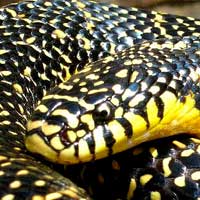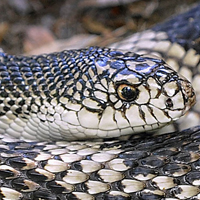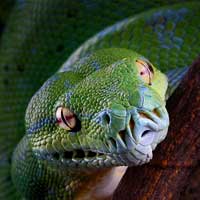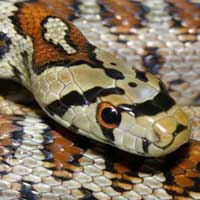Everything You Should Know About the Fascinating Haitian Boa
The Haitian Boa is scientifically named Chilabothrus striatus. It belongs to the Boidae family, which includes non-venomous constrictor snakes.
Scientific Name: Chilabothrus striatus
Snake Family: Boidae
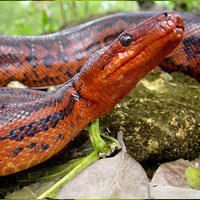
Haitian Boa: An Overview
The Haitian Boa (Chilabothrus striatus) is a non-venomous snake native to the islands of Hispaniola, which include Haiti and the Dominican Republic. Known for its striking patterns and impressive size, the Haitian Boa is an essential part of its ecosystem. This arboreal and terrestrial snake is both a predator and a vital contributor to its natural habitat’s balance. In this guide, you’ll learn about its habitat, diet, behavior, and much more.
Discovering the Natural Habitat of the Haitian Boa
The Haitian Boa thrives in various environments, ranging from dense forests to dry scrublands. Its adaptability allows it to inhabit both arboreal and terrestrial regions, depending on the availability of prey and cover.
| Habitat Feature | Description |
|---|---|
| Geographic Range | Hispaniola (Haiti and the Dominican Republic) |
| Preferred Environment | Tropical forests, mangroves, and scrublands |
| Climate | Hot and humid, with seasonal variations |
Understanding the Haitian Boa’s Diet and Feeding Habits
The Haitian Boa is a carnivore, primarily preying on small mammals, birds, and reptiles. Its constrictor hunting method makes it a highly efficient predator.
- Juveniles: Feed on small lizards and rodents every 5-7 days.
- Adults: Feed on larger prey like birds and medium-sized rodents every 10-14 days.
- Prey Size: Ensure the prey is no larger than the snake’s widest part.
- Provide fresh water daily for hydration.
Behavior and Temperament of the Haitian Boa
The Haitian Boa is a relatively calm species when handled properly, though it can be defensive if threatened. Its behavior varies between being arboreal and terrestrial, depending on its needs.
- Activity Pattern: Primarily nocturnal but may bask during the day in captivity.
- Defensive Behavior: May hiss or strike when threatened, though it’s generally docile.
- Hunting Style: Uses constriction to subdue prey, often ambushing it from a hidden position.
Ensuring the Health and Longevity of the Haitian Boa
With proper care, Haitian Boas can live for 20-30 years in captivity. Providing a suitable environment and monitoring their health is essential to ensure a long life.
| Health Issue | Symptoms | Prevention |
|---|---|---|
| Respiratory Infection | Wheezing, open-mouth breathing | Maintain proper humidity and temperature |
| Skin Shedding Issues | Incomplete sheds | Provide appropriate humidity levels |
| Mites | Itching, visible mites | Clean enclosure regularly |
The Reproductive Process of the Haitian Boa
Haitian Boas are ovoviviparous, giving birth to live young. Breeding them in captivity requires careful planning and optimal conditions.
- Mating Season: Late winter to early spring.
- Gestation Period: Approximately 6-7 months.
- Litter Size: 10-20 live young.
- Provide a temperature gradient and plenty of hiding spaces to encourage breeding.
Tips for Handling and Caring for the Haitian Boa
Handling and caring for a Haitian Boa requires patience and consistency. Their calm demeanor makes them manageable with proper handling techniques.
- Handle them gently, supporting their body to avoid stress.
- Maintain an enclosure temperature gradient of 80-90°F with a basking spot.
- Ensure humidity levels stay between 50-70% to mimic their natural habitat.
- Provide climbing branches and secure hiding spots.
- Clean the enclosure regularly and offer fresh water daily.



